Sketching for beginners
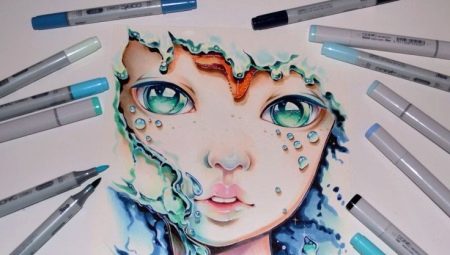
Sketching - a buzzword that is associated with creative people who can draw in a cafe, on a park bench, and even in the subway. Not everyone knows what the actual art of quick sketches really is and why it is so attractive. But those who have tried it fall in love with sketching for a long time.

Genres and Techniques
A sketch is a sketch, a quick drawing... Its uniqueness is in a snatched up actual impression, without a clear analysis, thought over the composition and details. It is for the minute, the ability to stop a moment and your aesthetic and emotional impression of it that sketching is valued. It also attracts with its accessibility, ease of entry (no need to be a professional artist), lack of serious costs.
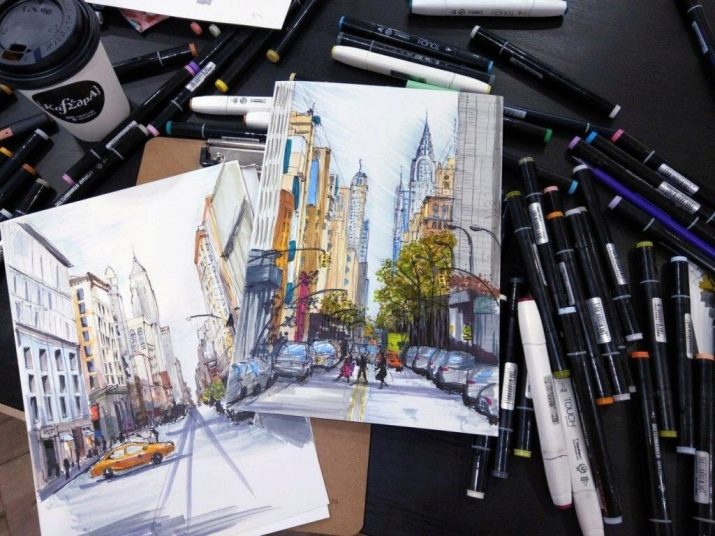

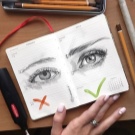



It is worth distinguishing between the concepts of "sketch" and "sketch-illustration". If the drawing takes less than an hour, it's a sketch. And if more, the word "illustration" is added. The technique is very interesting and developing, and also in demand. Talented sketches are bought, used for promotion in social networks, they appear on menus in cafes and in advertisements for fitness centers. What genres are popular in sketching.
- Food sketching. Probably the most popular genre, because its influence on the viewer is as great as possible. Delicious donuts and cakes, a fragrant slice of lemon in fragrant tea, filigree sliced avocado on a pretty plate - all this can be drawn so that your appetite will kick in instantly. And this has found its implementation in the illustration of recipes, for example.

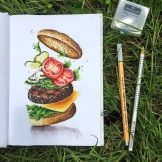
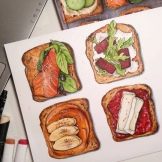
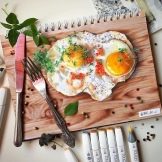
- Botanical sketching... The floral theme practically does not lag behind food history, because it is very interesting to draw small veins of flowers, to depict urban jungle with a pen and felt-tip pens.It makes beautiful postcards, it is used on business cards of florists and not only.
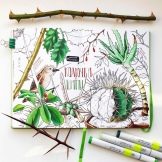
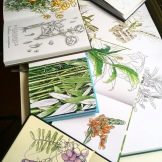
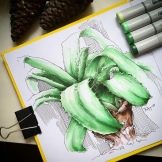
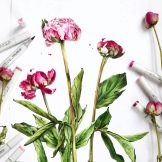
- Interior sketching... Great if an interior designer owns it. Of course, customers like 3D modeling and other modern proposals for the visualization of design projects, but when a specialist can create a sketch of the future interior (its individual elements) in less than an hour, this definitely adds points to him.
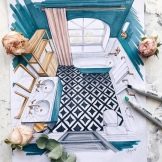
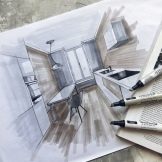
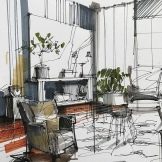
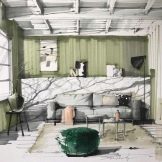
- Architectural sketching... Sketches of buildings, streets, known and unknown urban routes are also in demand. Urban sketches are rich in detail, creating an atmosphere of the city that you can guess from one picture. And such drawings can also be commercialized - in the same postcards, posters, illustrations for social networks.

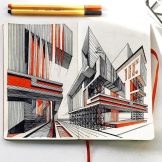
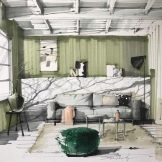
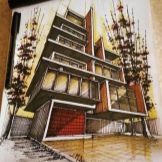
- Industrial (industrial) sketching. As a rule, we are talking about the image of household items, technology, which can also be done in different ways. Sketching does not necessarily reflect the reality of the moment, objects in it can disturb the present position, you can change the background, move them, arrange them according to the purpose of the artistic expression.
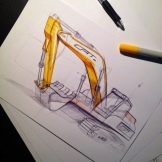
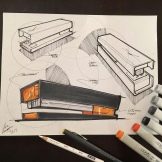
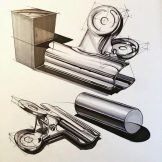
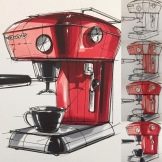
- Landscape sketching. It is dominated by parks and squares, summer cottages and garden plots, mainly those that are organized by man. To capture the harmony of this organization, to capture it in one drawing is a delicate matter.



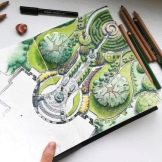
- Travel sketching. The best travel notes often appear in himself, right on the road, in moments of rest, when moving from point A to point B.
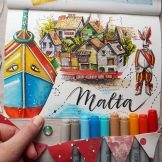
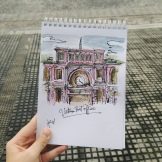
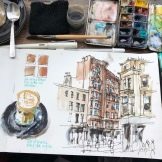
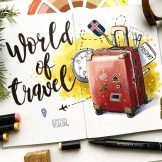
- Fashion sketching. Getting a quick sketch of an attractive bow seen on a bystander is the power of direction. Or draw something that has so far appeared only in the head - so as not to be forgotten. It helps a lot for people who are passionate about fashion.


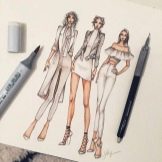

- Portrait sketching. The point is not to make a detailed portrait of a person, but to leave an image, impression, accent lines on paper. You can see a guy with pink hair on the subway, and quickly get out a sketchbook so that the impression becomes tangible.
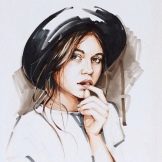
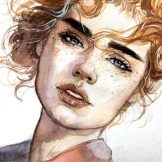
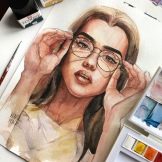

And these are only the most popular genres, while the emergence of new ones is happening right now. Therefore, sketching is actively developing, and from the direction that served the stage of creating a full-fledged picture, it has turned into a separate, autonomous type of creativity.
What is necessary?
So, if you have motivation and interest, it's time to start studying. What is great about sketching is the skillful use of self-education skills in teaching. Simply put, sketching can be mastered on your own. By exploring a huge stream of useful information on the Internet, you can learn to navigate in it, and the learning process will be successful. The minimum starter kit for beginners is a sketchbook (if not available, a sketchbook will do), an eraser, and some pencils. Markers and alcohol markers, crayons, pastels will be connected a little later. Pencils for drawing, not only artists know this, are different in rigidity. If the pencil is hard, the line on the paper will remain thin and light. If soft, painting will be dense and dark.

How the pencil hardness level is indicated. Russian marking:
- M - soft;
- TM - hard-soft;
- T is solid.

Eurolabelling:
- HB - hard-soft;
- B - soft and dark;
- H - hard and light;
- F - medium type.

The letters are usually preceded by a number that indicates the degree of hardness / softness. Variations are from 0 to 9, with 9 being the softest.
Beginners do not need a huge set of pencils, for a start, three are enough: universal HB, one hard 2H, and another soft 2B. Which manufacturer is not so important as long as a person is studying. Pros often choose pencils from a Czech and German manufacturer. What else is required for training:
- an eraser is also hard and soft, and also with sand in the composition (this literally removes the top paper layer);
- helium pens - it is convenient to draw with them, and the result is cool, only they are consumed quickly and in some cases may leak;
- white helium pen or white felt-tip pen - leaves strokes and other patterns on the colored surface, can also be used as a corrector;
- liner - this is the name of a drawing pen, which is refilled with ink (liners are disposable, with a replaceable cartridge, as well as with a refillable one).
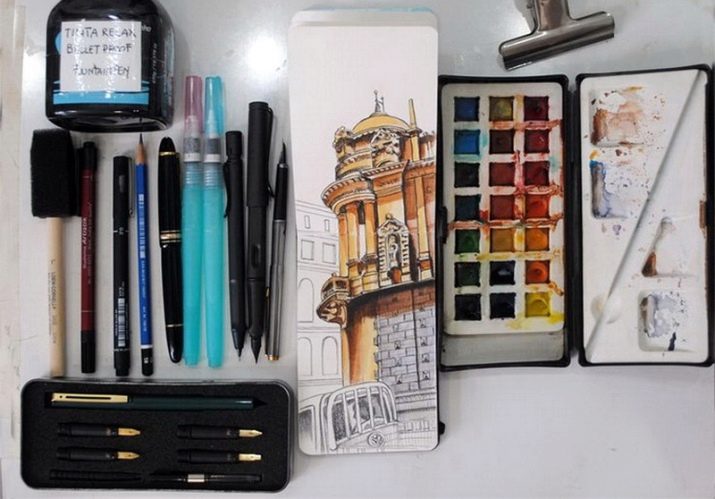
Separately, it should be said about markers... For the first drawings, it may be too early to use them, but it really attracts beginners to them. Sketchers use artistic markers (and there are, for example, decorative markers). The paint that the marker leaves on the sheet can also be different: from waterproof to washable, from transparent to impervious. The tool tip can be round and square, beveled.

It is also possible that soon a novice sketcher will be interested in charcoal for drawing, sanguine. Watercolor is also used in sketches, but less often. The ideal paper for sketching is considered to be a sheet with a density of 120-130 g / m2, it should not be thin paper.
What can you draw in a sketchbook?
There are simply no boundaries for ideas. The beauty of drawing is that you do not need to adapt to fashion and traditions, you do not need to choose a strictly specific genre and follow it. The first works are more likely to be graphic. In black and white drawing, you can focus on the idea itself, on the object of the image, and not on tricks and tricks. First sketches.
- Food... First, it’s a pleasant experience with very good associations. It is worth trying to draw fruits, you can draw a cut, or cakes, cookies. Better yet, try to compose your recipe and illustrate it. The recipe is also not printed, but written by hand, in the author's style. For example, create a sketch on the theme "My favorite salad" with a sketch of each of the ingredients.
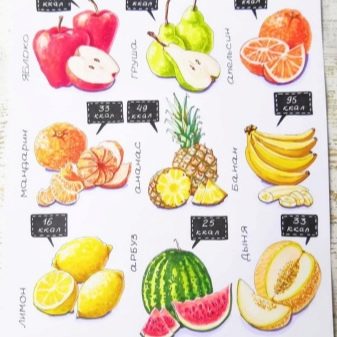
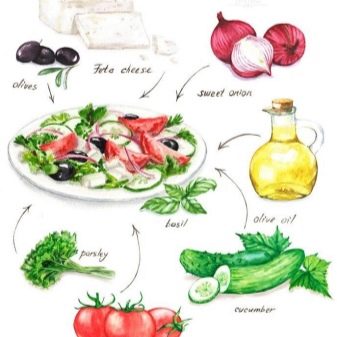
- Beautiful colors... This topic is also grateful. It is better to draw from nature: whether it be flowers in a vase on the windowsill or modest marigolds in a city flower bed. You can specially arrange for yourself a trip to the botanical garden to be inspired by the beauty there.
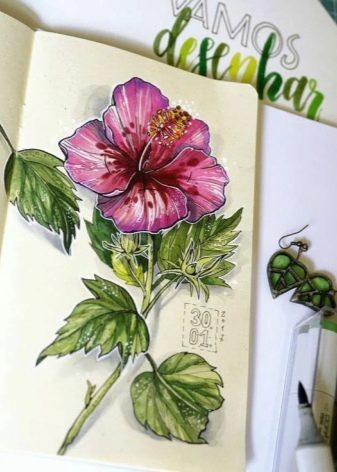

- Of people... Try to sketch passers-by, casual oncoming. Someone focuses on faces, someone notices clothes and style, someone - silhouettes and poses. For beginners, this may be difficult, but it turns out interesting.

- Unusual (or just something attractive) urban elements... For example, the beautiful entrance to the bakery. Or high windows in the "stalinka", or maybe lamps in the park near the house. It is not necessary to make a holistic landscape, just one element snatched from reality, which is of interest to something, is enough.
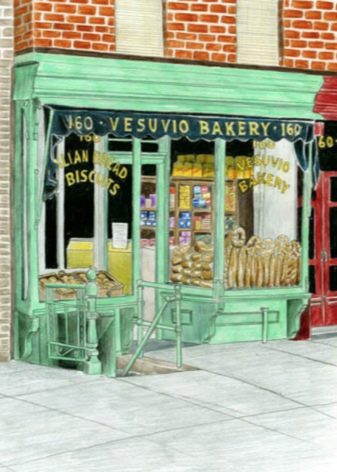
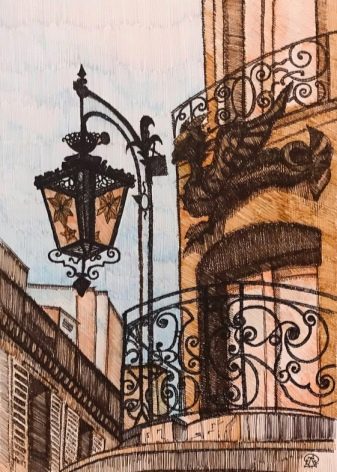
Probably, with what exactly to draw, problems arise less often. The main thing here is to get a taste. Then every leaf on the tree will seem worthy of a picture.
Where to begin?
There are several universal profile recommendations that will not allow a beginner to get confused. A drawing is usually created in 3 stages.
- Pencil sketch. The sketcher quickly sketches outlines and basic elements of the future image.
- Fill color. We are talking about the main color spots, which will not necessarily be watercolor - markers are fine too.
- Marker processing. At this stage, the contours of the drawing are carefully worked out, small details that make the sketch a finished work.
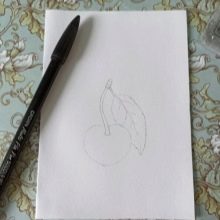
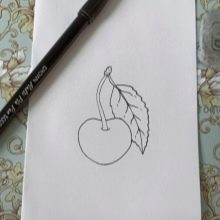
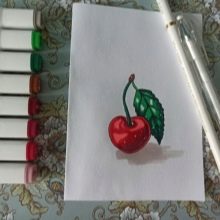
If it still seems very difficult to those who are going to learn sketching from scratch, you need to start with the basics. Just try to draw circles on the sheet with a pencil so that they do not intersect, try to fill the entire sheet with them. This trains the artist's vigilance, and later comes in handy in building a composition. Then you can try to fill the sheet with shading, and in different directions. The sheet does not need to be rotated. Next, you can go to the images of geometric shapes.
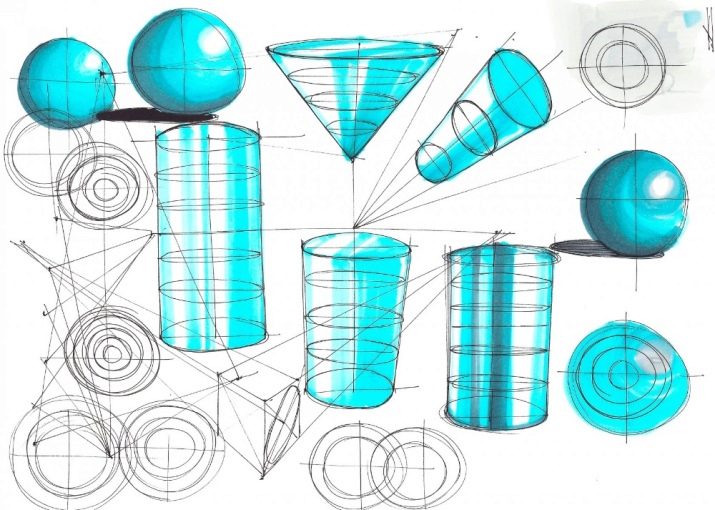
When the hand turns out to be "full" in such simple exercises, you can begin to crush the complex ones. That is, for example, a house is considered a complex object to represent. But it consists of parts: the same rectangle, triangle, square.And if a beginner sketcher has already worked with geometric shapes, he knows what to do. Let it be intuitive, but he knows. And the hand "remembers" too. And a few more tricks for those who master sketching on their own.
- A common mistake for beginners is to smear the drawing with their own hand. Put another sheet under the arm that is on the sheet. If the work is large, a special device (bridge) is used.

- In order to remove crumbs from the picture, you will need special tassel... More precisely, it is the most common, just such is its purpose. It is always kept separately, clean, so that at the right time it will be right there.
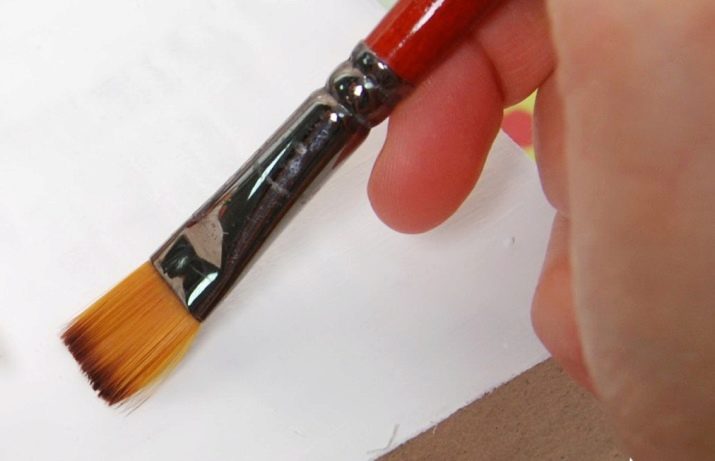
- And so that the sketch does not blur, it is fixed special means... Usually, fixation occurs as the sheet is filled.
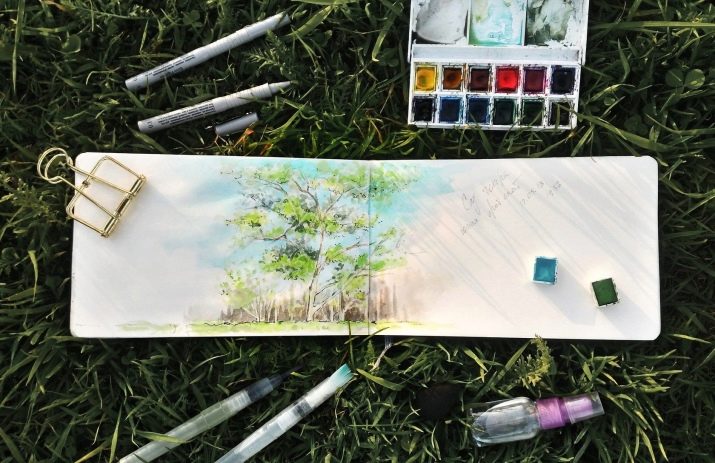
- To get shading, you need to hold a pencil with a "pinch", as for writing. Only fingers will work. The same holding method is used to draw small details.
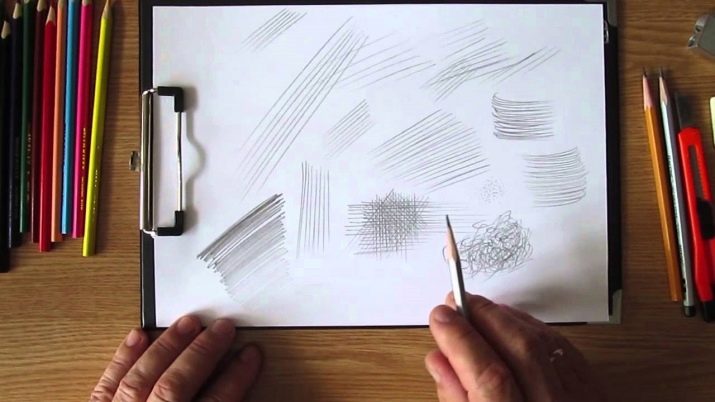
- To get long strokes, hold the pencil in the middle, holding it with outstretched fingers and parallel to the paper. And long lines are made with a relaxed hand, when the pencil is clamped inside the palm of the hand with the thumb.

- In sketching, the lines must be live: they are carried out sharply and quickly, complex strokes are not needed. Wide lines are required to indicate emphasis. A heavy object is indicated with thick lines, a light object with thin lines. The further away the object, the thinner the line will be, the closer - the thicker.

Much will come with experience. It is important to draw: not sparing time, trying again and again. And it's easier to do this using ready-made master classes.
Master classes for beginners
The first lessons are the study of geometric circles, hatching, lines. It all starts with these primitive master classes. When the hand becomes more confident, you can start doing something more difficult. For example, to a fashion sketch. It will also be relatively simple, but for a beginner, such drawing is also a challenge. Fashion sketch in stages.
- Skeleton... A vertical axis is drawn in the center of the sheet. A pencil is used. The boundaries, top and bottom of the model are indicated. Next comes the designation of the main points of support: head, shoulder girdle and hips. The head fits into the height of the model by about 8 times, but in the sketch it is possible and 10. The torso will be exaggerated, shorter than the legs, no less than 2.5 times. The legs and neck need to be deliberately lengthened. Hands are added schematically. The waist is drawn as needed.
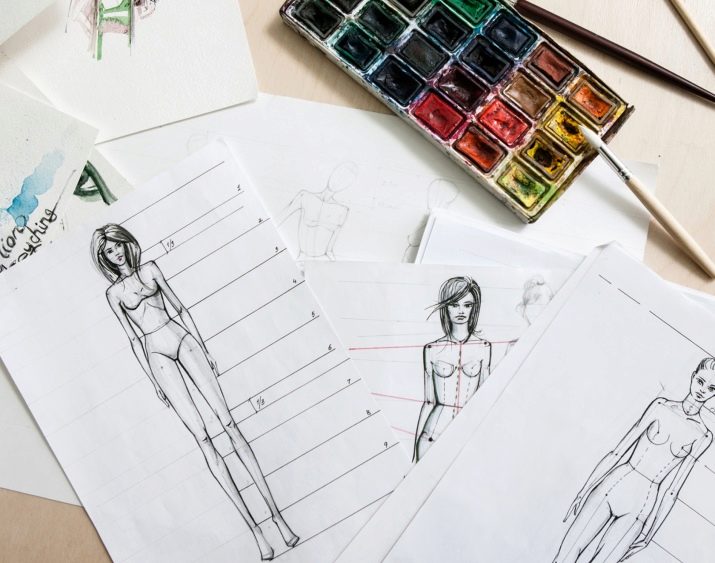
- The form... It's time to start sketching the clothes. It is necessary to start from general forms, gradually moving towards smaller ones. Things are thrown onto the fulcrum as if on a hanger. The lines are almost transparent, there is no need to think about the volume yet.
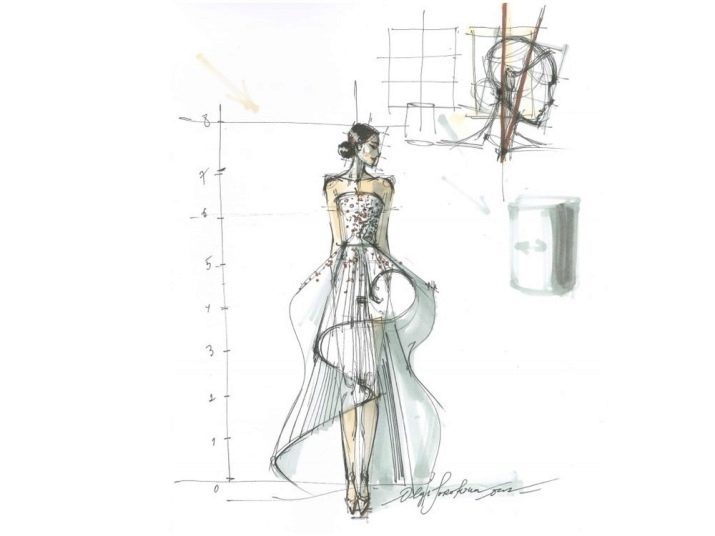
- Colour... It is necessary to fill in color those details of the wardrobe that need it in the first place. You can draw with markers, colored pens and pencils, felt-tip pens, watercolors.
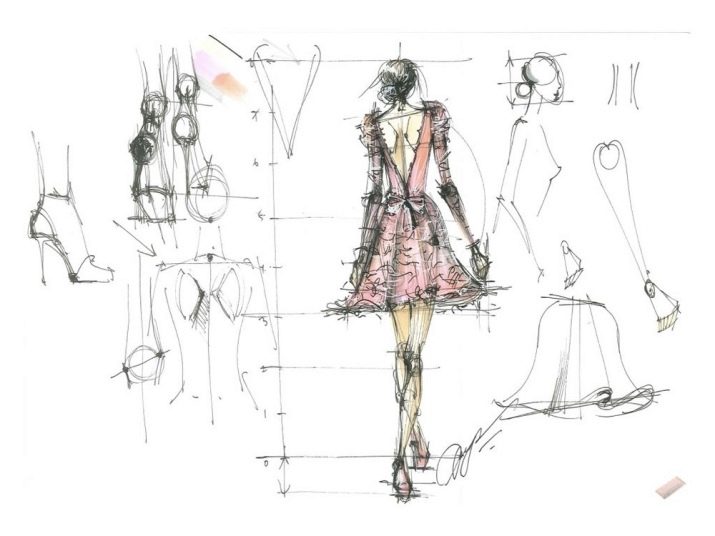
- Details... Black lines are drawn on top of the color, that is, using pencils or markers. The paths should have different widths to make the sketch look more vivid. Fabric ornament, print - it's time to tackle it. And also to highlight accessories, stitches on clothes (decorative, of course, and not everything). You can outline facial features: eyes, first of all, lips. Then - curls, fingers (they are often drawn twisted into a spiral). The sketched pencil lines can then be erased.
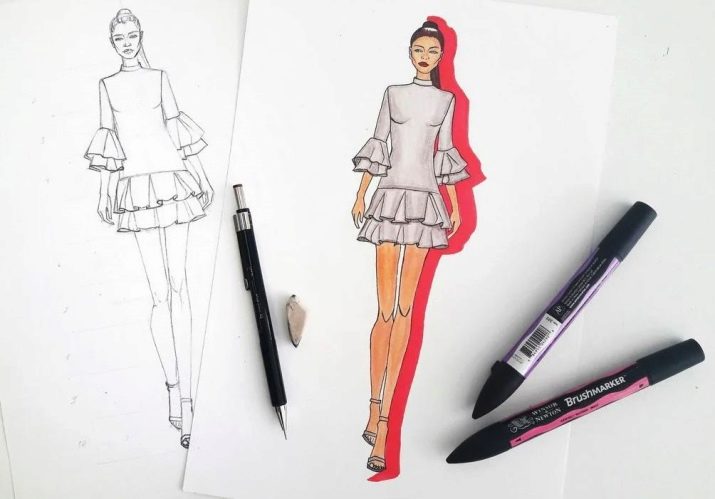
- Background... It can be as elaborate scenery with many details, or just a hint at the place where the model is depicted. The application of shadows with a soft pencil will complete the work: shadow on the floor from the figure itself, shadow under the eye sockets, under the chin, shadows on dresses, and so on.
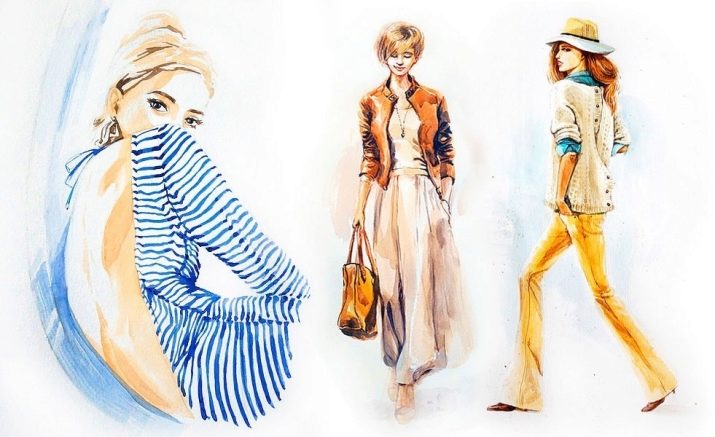
The most pleasant and easiest moment in the work is to put an autograph on the completed sketch.
This is how, at home or on a trip, in any optimal conditions, the art of sketching is comprehended step by step. From linear drawing in the style of simple street sketches, you can move on to more complex work, master the technique so that the work can be sold to customers. There is room to grow!
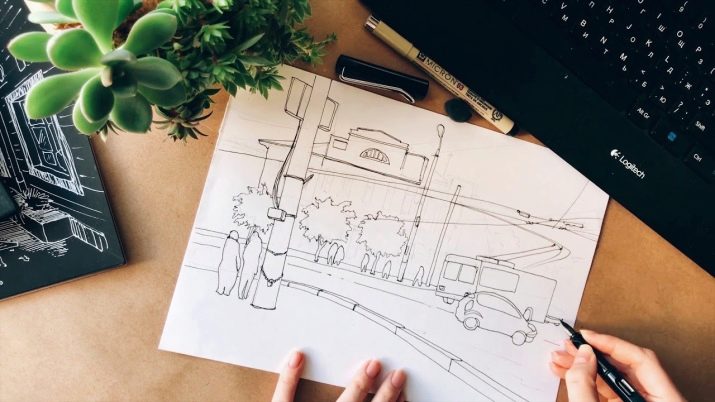
For a sketching lesson for beginners, see the next video.








